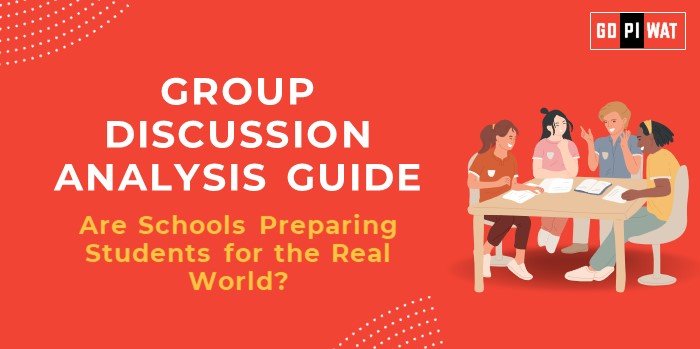📋 Are Schools Preparing Students for the Real World?
🌐 Introduction to the Topic
The question, “Are schools preparing students for the real world?” touches on critical concerns about the alignment of education with practical life skills, employability, and adaptability in a rapidly changing society. With rising demands for digital, financial, and interpersonal competencies in the workforce, the effectiveness of school education in equipping students for these real-world challenges is widely debated.
📊 Quick Facts and Key Statistics
- 📉 Youth Unemployment: Global youth unemployment stands at 13%, indicating potential skill gaps between academic learning and job market needs.
- 📖 Skill Gap Reports: 60% of employers report a lack of adequate preparation in soft skills among recent graduates.
- 💻 Digital Literacy: Around 40% of students in high schools lack essential digital skills needed in modern workplaces.
- 💰 Financial Literacy: In a recent survey, only 22% of students demonstrated basic financial management skills.
- 🧠 Mental Health Statistics: Approximately 30% of high school students report stress related to future uncertainty and a lack of practical skill applications.
👥 Stakeholders and Their Roles
- 🏫 Educational Institutions: Delivering curriculum and preparing students with a foundation in knowledge and critical thinking.
- 🏛️ Government and Policymakers: Setting curriculum standards, implementing policies to include practical skills, and supporting financial literacy initiatives.
- 💼 Employers: Defining skill requirements, offering feedback, and providing internship opportunities.
- 👨👩👧👦 Parents and Guardians: Encouraging soft skills, resilience, and practical exposure outside the school environment.
- 🎓 Students: Advocating for skills and programs that align with career readiness and personal growth.
🏆 Achievements and Challenges
✨ Achievements
- 📚 Career Readiness Programs: Introduced in schools globally.
- 🔬 STEM Education: Growth of initiatives to align with the demands of tech-driven industries.
- 📝 Experiential Learning: Project-based assignments and internships have improved practical knowledge.
⚠️ Challenges
- 💸 Lack of Financial Literacy: Schools often miss essential financial skills, impacting students’ financial independence.
- 🧠 Mental Health and Stress Management: Limited emphasis on coping skills and emotional intelligence for real-world pressures.
- 💻 Digital Skills Gap: A divide exists, particularly in under-resourced areas, with students lacking digital competencies for tech-centric job roles.
Global Comparisons: Finland emphasizes life skills and independence, integrating real-world readiness into curriculum designs. Japan focuses on ethics, community responsibility, and respect for nature to cultivate well-rounded citizens.
Case Studies: Singapore has successfully integrated financial literacy and digital skills in primary and secondary education, boosting job market preparedness.
💡 Structured Arguments for Discussion
- ✔️ Supporting Stance: Schools increasingly focus on developing critical thinking, teamwork, and basic financial skills, essential for real-world readiness.
- ❌ Opposing Stance: Schools prioritize academic achievements over practical life skills, leaving students unprepared for work and personal finance challenges.
- ⚖️ Balanced Perspective: While schools provide a foundational education, partnerships with external programs can better prepare students for real-world demands.
🔑 Effective Discussion Approaches
- 📊 Opening Approaches:
- Statistical Approach: “With 60% of employers highlighting a soft skills gap in recent graduates, the question arises—are schools equipping students for real life?”
- Case-Based Introduction: “In Finland, the emphasis on practical life skills from early education sets a global benchmark, raising questions about other countries’ approaches.”
- Contrasting Evidence: “While academic performance has improved, skills like financial literacy and digital competence remain under-addressed in many schools.”
- 🛠️ Counter-Argument Handling: Acknowledge academic achievements, then suggest that integrating life skills does not detract from educational standards but enhances them. Present global comparisons where schools balance academics with life preparedness, like in Finland or Singapore.
📈 Strategic Analysis of Strengths and Weaknesses
- 💪 Strengths: Academic rigor, exposure to structured knowledge, critical thinking foundations.
- 💔 Weaknesses: Lack of financial literacy, digital skills gap, insufficient focus on soft skills and mental resilience.
- 🌟 Opportunities: Collaboration with tech companies, introduction of real-world curriculum, inclusion of experiential learning.
- ⚡ Threats: Resistance to curriculum change, insufficient teacher training for real-world skills, digital divide in under-resourced schools.
📚 Connecting with B-School Applications
- 💼 Real-World Applications: Linking this topic to B-school projects on educational reform, skill-building workshops, or digital literacy programs.
- ❓ Sample Interview Questions:
- “What practical skills do you think schools should focus on to prepare students for the workforce?”
- “How can schools balance academic rigor with real-world readiness?”
- 🎓 Insights for B-School Students: Consider the impact of an evolving job market on future educational programs, the role of internships, and the importance of adaptability and continuous learning.


